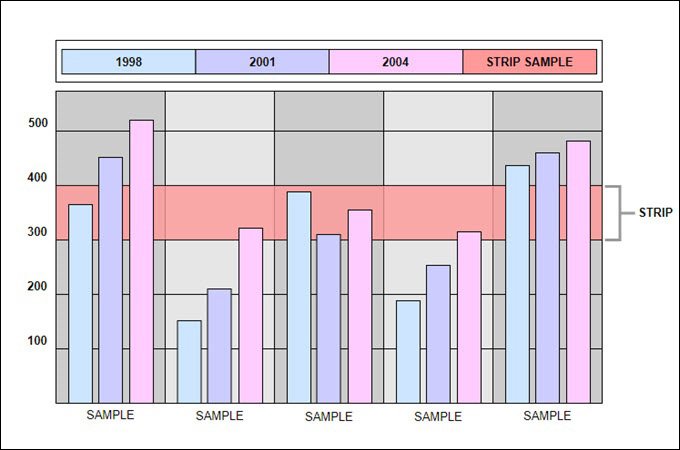Introduction
Strip charts are the simplest form of continuous charts where data is plotted over time on a moving piece of paper or electronic display. They are used in many industries for real time monitoring, providing an unbroken timeline of data to help you make decisions. But like any tool they have their challenges. Whether it’s data accuracy or user interface complexity, understanding these challenges is key to making strip charts work for you.
Strip Chart Challenges
Data Accuracy and Resolution
One of the biggest challenges of strip charts is data accuracy. The sampling frequency has to be just right; too low and you’ll miss out on critical data points; too high and the data will be a noisy mess. The Nyquist theorem, often mentioned in data circles, states that the sampling rate should be at least twice the highest frequency in the data. Ignore this simple rule and you’ll get misinterpreted or “aliased” data – a nightmare for anyone who needs precise information.
A pharmaceutical plant monitoring reaction temperatures. A low sampling rate might smooth out dangerous spikes and operators would be unaware of a safety hazard. Data accuracy here isn’t just a nice to have; it’s the foundation of safe operations.
Real Time Monitoring Limitations
Real time monitoring is where strip charts really come into their own, but maintaining a seamless performance is easier said than done. Challenges arise when multiple signals need to be tracked at the same time, especially with high frequency data. The scrolling has to be smooth, the data updates have to be near instantaneous and any lag will compromise the monitoring.
Latency creeps in and you can’t trust what you see on the screen. A friend working in energy grid management told me about the frustration of a slow strip chart that was behind the actual power loads. A few seconds delay in recognising power surges can lead to cascading failures – not an ideal situation to say the least.
User Interface Complexity
Strip charts are useful but can be daunting especially if you’re not used to reading them. Poorly designed interfaces with tiny labels, confusing axis scales or hard to read data lines can turn a useful tool into a puzzle. Users need to see at a glance what’s happening without having to decipher a mess of overlapping data points.
Imagine a road map with half the street names missing. Would you trust that map to get you to your destination? Neither would most users trust a cluttered strip chart to make decisions.
Data Overload
Strip charts are at their best when showing relevant data in a concise format. But what happens when the data flow is like an overstuffed filing cabinet? When too many data points are plotted it overwhelms the user and can hide the important information. This data overload not only makes the chart hard to read but can also lead to missed insights.
I once worked on a project monitoring chemical reactions, and we faced this exact issue. We had so much data on one chart that it was like trying to spot a needle in a haystack, only the haystack kept moving.
Technical Issues
Software Compatibility
Outdated software can become a stumbling block for those who rely on strip charts. Legacy systems may not integrate well with newer applications, leading to a frustrating patchwork of workarounds. Users of platforms like LabWindows/CVI have shared stories of struggles when attempting to update or expand the capabilities of older strip chart tools. Incompatibility can slow progress and limit the scope of what users can achieve.
Integration with Other Systems
Strip charts often have to work with other monitoring systems, databases or cloud services. Synchronizing data across these platforms can be like herding cats. Without seamless integration there is a risk of data gaps or mismatches that can break the whole system. This is particularly challenging in industries like telecommunications where real-time data alignment is critical for service quality.
Solutions
Improving Data Accuracy
The key to more accurate data on strip charts is simple: higher sampling rates that align with the Nyquist theorem. Advanced filtering can also help remove noise from the data making the visualization cleaner and more trustworthy. High quality sensors combined with good filters give you an accurate representation of the data without the extra ‘fuzz’ that confuses the user.
Real-Time Monitoring
To improve real-time visualization modern strip chart technology needs to handle high frequency data without latency. Upgrading to cloud based solutions can help manage the data more efficiently and so users see real-time data not a delayed snapshot. This allows engineers and operators to respond faster to changing conditions whether on a factory floor or in an IT control room.
Simplifying User Interfaces
A simple strip chart interface can turn a confusing tool into a trusted friend. Intuitive design elements like tooltips, legends and clear data labels make it easier to read. Engineers benefit from interfaces that have customizable views so they can focus on the data that matters most. Think of it as having a GPS that not only tells you where you are but also shows you the shortest route ahead.
Data Overload
Taming data overload requires smarter data aggregation. By summarizing large data sets into smaller chunks strip charts can give you a view of the whole without losing the detail. Customizable filters and views let you focus on what’s important and ignore the noise. It’s like having a cluttered toolbox – knowing where everything is when you need it saves time and stress.
Best Practices for Using Strip Charts
Regular User Training
Training is the key to effective strip chart use. Regular training sessions keep teams up to speed with the features and functionality of their monitoring tools. When users feel confident in their skills they can use strip charts to support decision making. Training also de-mystifies the process so even new users can approach strip charts without fear.
System Updates
Keeping up to date with software and hardware updates is crucial. Regular updates mean better performance, compatibility with other systems and access to new features. It’s the difference between driving an old car with out of date navigation and one with up to date GPS and a smooth ride.
Conclusion
Strip charts may seem simple but using them effectively has its challenges and we shouldn’t ignore them. From improving data accuracy to preventing overload these can be tough. But with clever solutions – like higher sampling rates, modern technology, and providing user-friendly interfaces—strip charts can continue to be the reliable tools industries count on for real-time monitoring and data analysis. In the end, addressing these challenges equips professionals with the insights needed to make informed, timely decisions.






